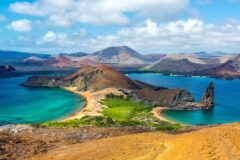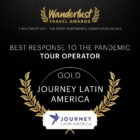Latin America’s Hidden Gems: Top 10 Most Underrated Destinations

Travel Expert Rosie Kay picks her favourite places on her recent year-long backpacking trip through Latin America.
While planning my extended trip to Latin America, I knew I wanted to visit iconic spots such as Rio de Janeiro in Brazil, Cusco in Peru and Patagonia in Argentina & Chile. However, I was also eager to uncover lesser-known treasures.
Latin America, with all its incredible diversity, truly offers something for everyone. I have compiled a list of my favourite off-the-beaten-track destinations that you should consider adding to your itinerary.
1. Uyuni Salt Flats – Bolivia
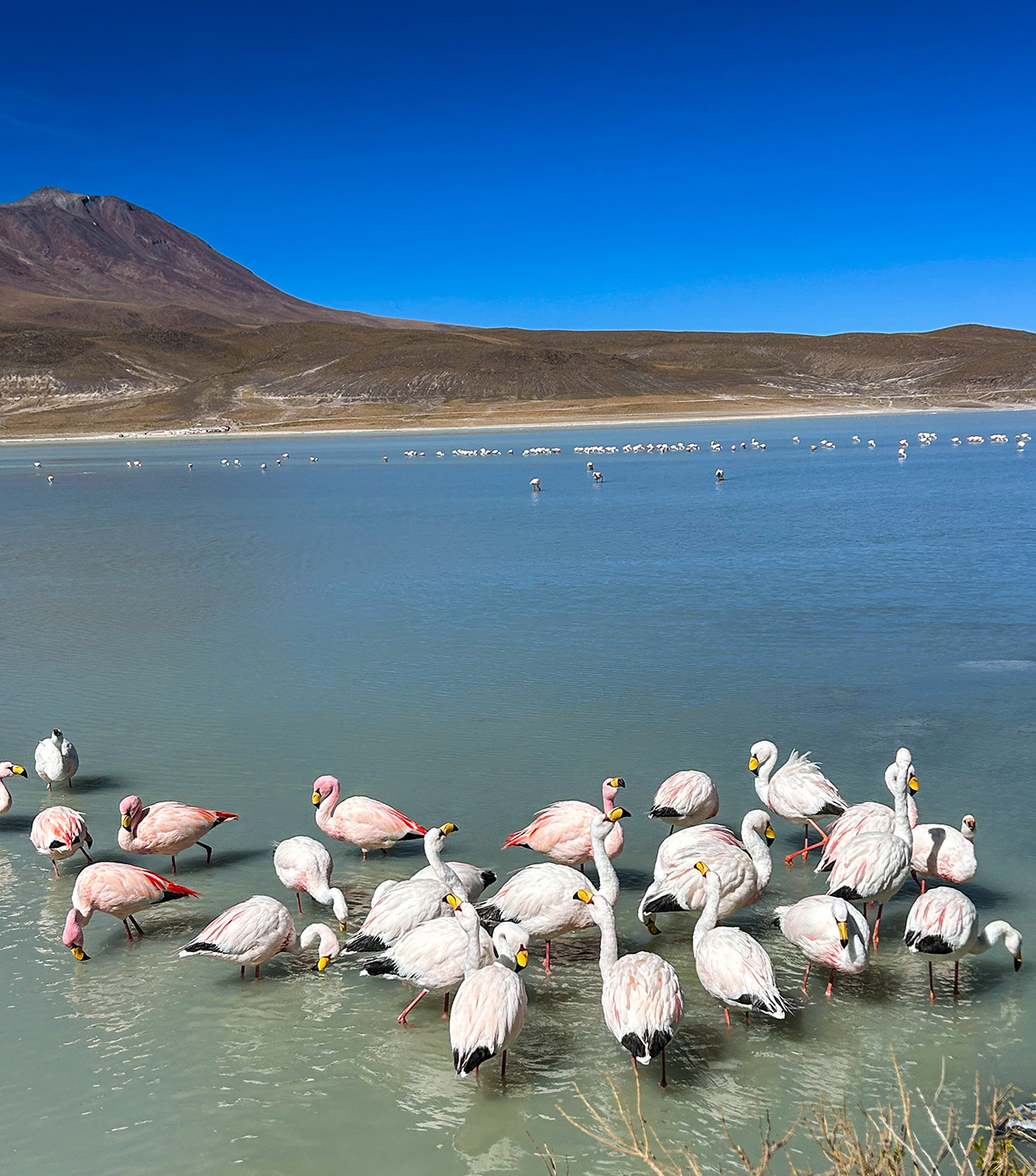
The Salar de Uyuni is a surreal spectacle that must be experienced firsthand on the salty plains in Bolivia. Spanning over 10,000km in the Altiplano range and sitting at 3,656 masl, the views of the Andes reflecting against the crystal white ground are simply breathtaking.
A jeep drives you around the flats, with local guides pointing out the best spots for photos. There are restaurants and hotels made almost completely from salt (with signs prohibiting guests from licking the walls!) In the evening, I enjoyed a glass of wine in the middle of the flats and witnessed my first ever moon rise, which coincided with the sunset, before tucking into my bed, where only the mattress, pillows and linen were not made of salt.
Despite its seemingly uninhabitable environment, the area is home to numerous species of wildlife, including pink flamingos, vicuñas, and viscachas. At the heart of the flats lies Incahuasi Island, a unique oasis in the sea of salt, covered in towering cacti.
I opted for the three-day tour from Uyuni, which includes visits to a rustic train cemetery, steaming geysers and natural hot springs. It is also a fantastic way to cross the border from Bolivia to the Atacama Desert in Chile. This was one of the most beautiful land crossings I experienced.
- Travel Tip: Ask your guide to take some fun, perspective photos over the salt flats.
2. Salta – Argentina
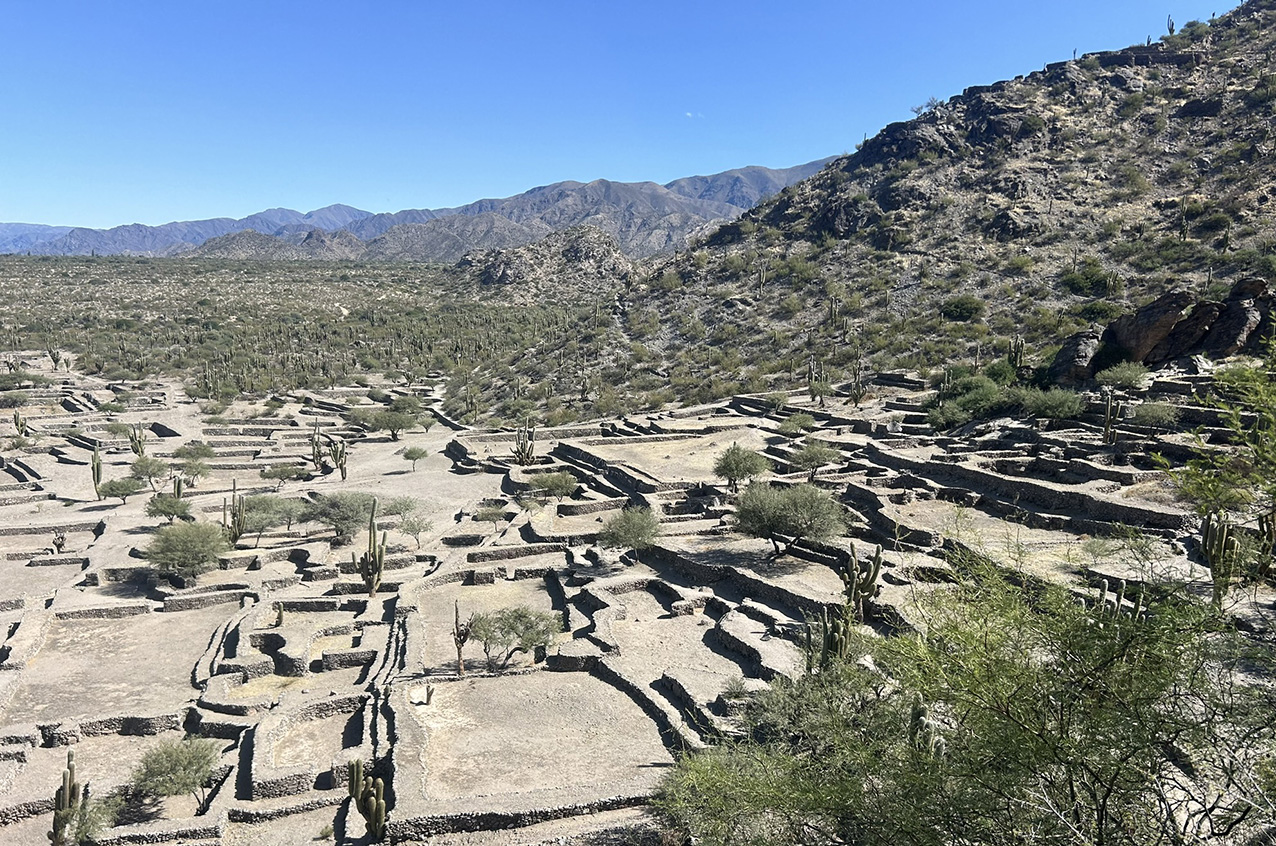
Nestled in Northwest Argentina, Salta boasts red rocky landscapes, impressive pre-Columbian history, delicious food & wine and colonial architecture. The best way to explore this region is by self-driving down the famous Ruta 40, starting in the city of Salta. For a unique experience, visit The Museum of High Altitude to learn the poignant story of the frozen Inca mummies. These children were sacrificed more than 500 years ago and displayed in the museum after their discovery in 1999.
The views along Ruta 40 are so astonishing, it’s hard to resist stopping every few minutes. My favourite stop was The Amphitheatre, a red stone cave with incredible natural acoustics. On your visit, venture in and listen to the local flute player who takes advantage of this sound quality. I stopped for a couple of nights in Cafayate, visiting the impressive ruins of the Quilmes civilisation, one of the biggest archaeological sites in Argentina. A stay here is not complete without sampling the popular Torrontés wine, famously grown in this region.
- Travel Tip: If hiring a car, check the insurance policy covers journeys on Ruta 40. Some companies omit this from their policy.
3. Barichara– Colombia
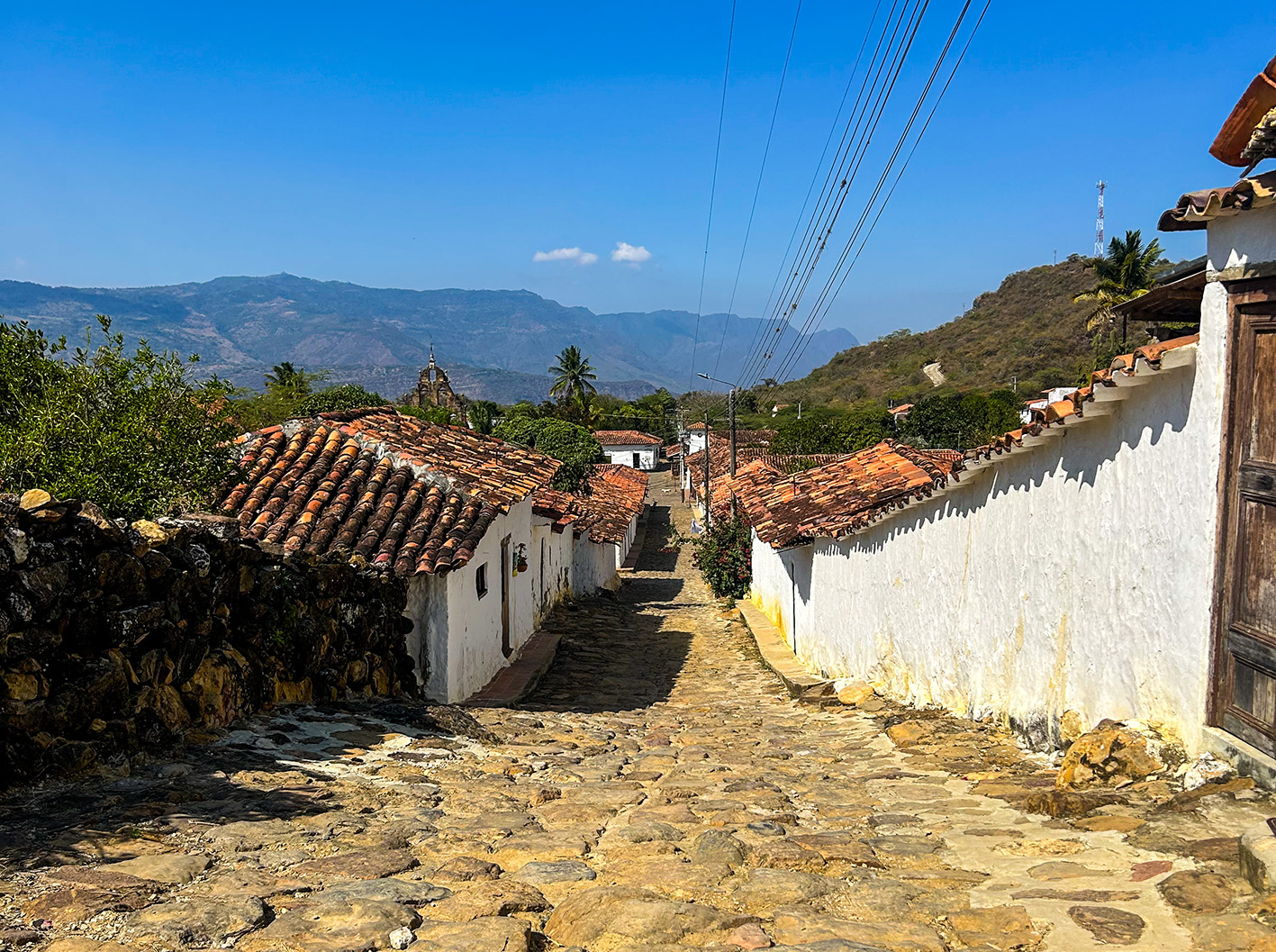
North of Bogotá in Santander lies Barichara, a charming town that transports you back to Spanish colonial times with its cobblestoned streets and whitewashed houses. Barichara may be small, but don’t let its size deceive you. I spent a whole day wandering its streets, dining in authentic restaurants. The locals are so warm and welcoming that it feels like you’re dining in their own homes.
A popular activity is hiking the Camino Real to the neighbouring town of Guane. The stoney 6km path offers stunning views of canyons and green valleys. Guane is a fraction of the size of Barichara, but the perfect place to enjoy a Menú del Día and gaze over the Suarez River. The journey to Guane is downhill and what goes down, must come up! I opted to return to Barichara by tuktuk. As I ascended the steep mountain under the scorching sun, I was grateful not to be trudging up on foot.
- Travel Tip: Start your hike early, as the midday Colombian sun is unforgiving.
4. Mancora – Peru
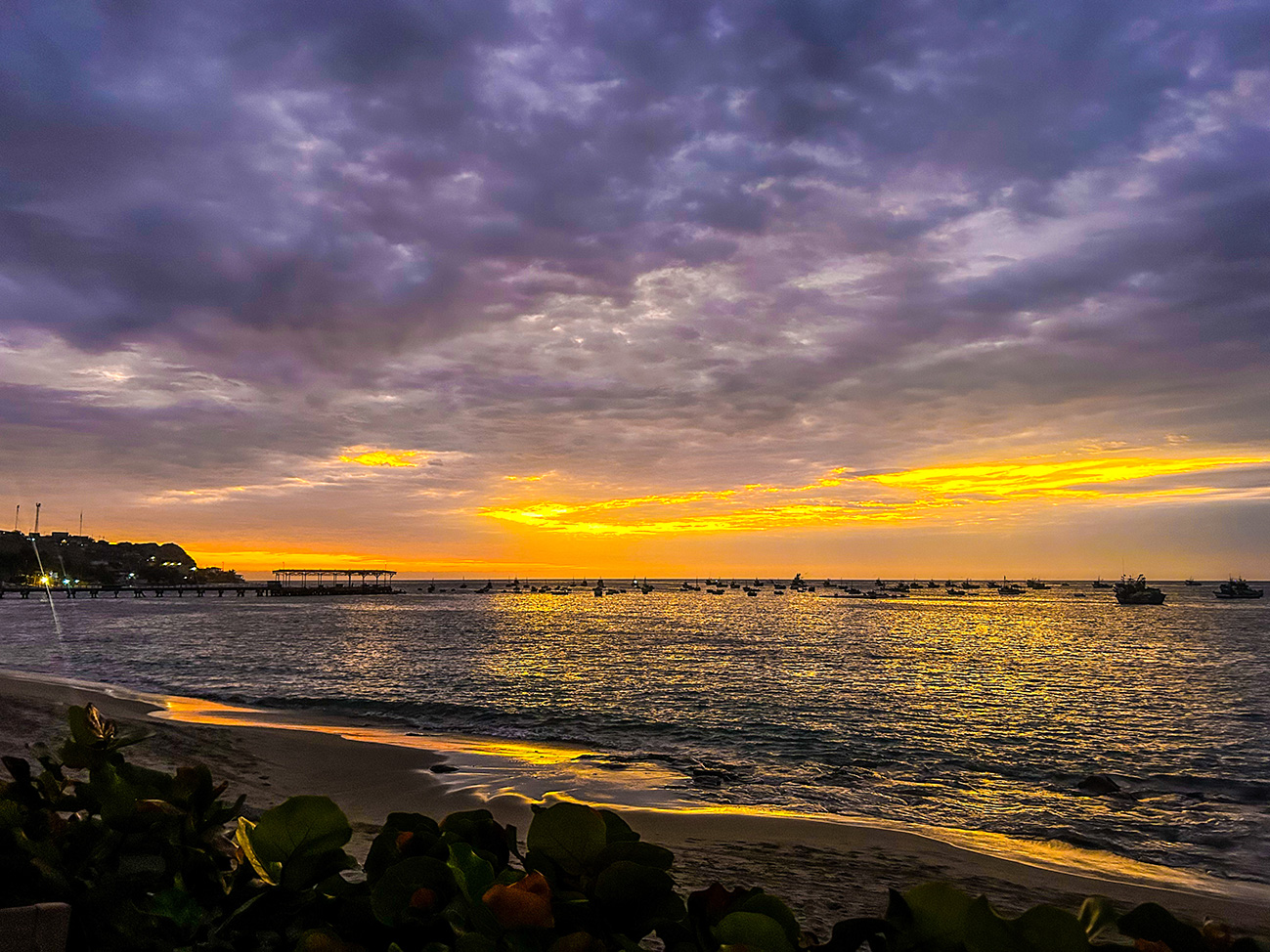
Whilst Peru isn’t typically known for its idyllic beaches, Mancora will soon change your mind. This popular destination for Peruvian holiday makers, is located on the northwest coast and is perfect for surfing, enjoying the beach and unwinding.
After weeks hiking through the Andes, I was looking for a place at sea level to relax. The beachfront resorts are ideal for relaxing, but if like me you can’t sit still for long, you can rent a surfboard or ride a horse down the beach.
The sunsets were a highlight for me – nothing beats sipping a Pisco Sour on the beach with a bright orange sky reflecting off the tumbling pacific waves. Though, for travellers visiting between July and November, the highlight is likely to be witnessing the humpback whales, migrating from Antarctica through Mancora’s warm waters.
- Travel Tip: Bring insect repellent, the mosquitos can appear in their masses!
5. Florianopolis – Brazil
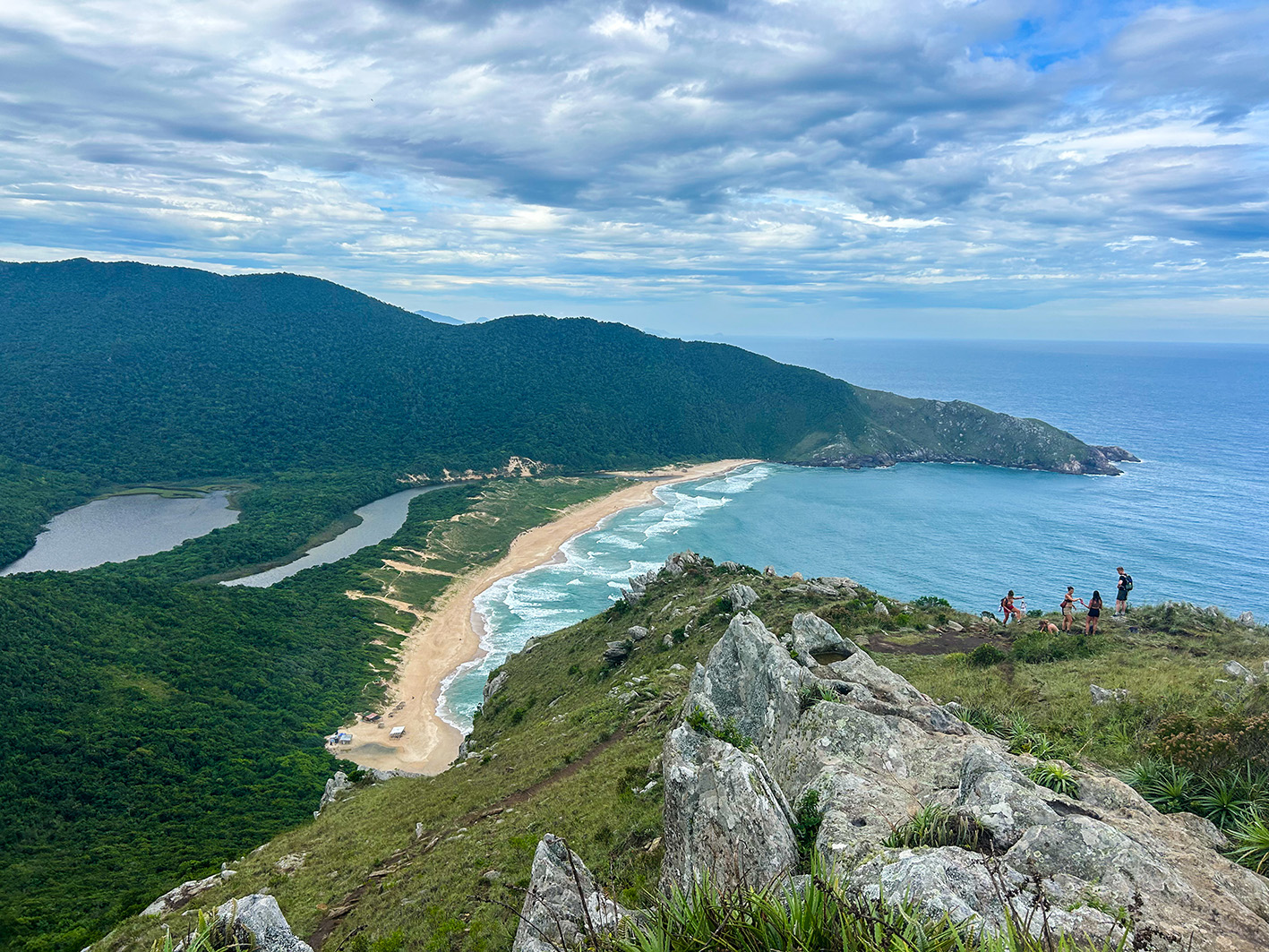
Known locally as Floripa, Florianópolis is a coastal city that has become increasingly popular as one of the last chances to enjoy a Brazilian beach before heading to Iguazú on the road from Rio. With beautiful nature, hiking trails, vibrant nightlife and white sandy beaches – Florianópolis appeals to everyone.
Brazilian beaches are great because once you’ve picked your spot on the sand, everything comes to you – from sugary Caipirinhas to new clothes, the Brazilians have you covered. At night, you’ll find bars with live music, with locals and tourists dancing the night away.
I chose a one-day hike to Praia Da Lagoinha do Leste, a secret beach accessible only by hike or boat. The trek takes you through the jungle to a viewpoint where you are greeted by a strange little alien figure. The real spectacle is seeing the almost empty beach below.
- Travel Tip: Research where you want to stay, neighbourhoods are spread out and each has its own benefits.
6. Puebla – Mexico
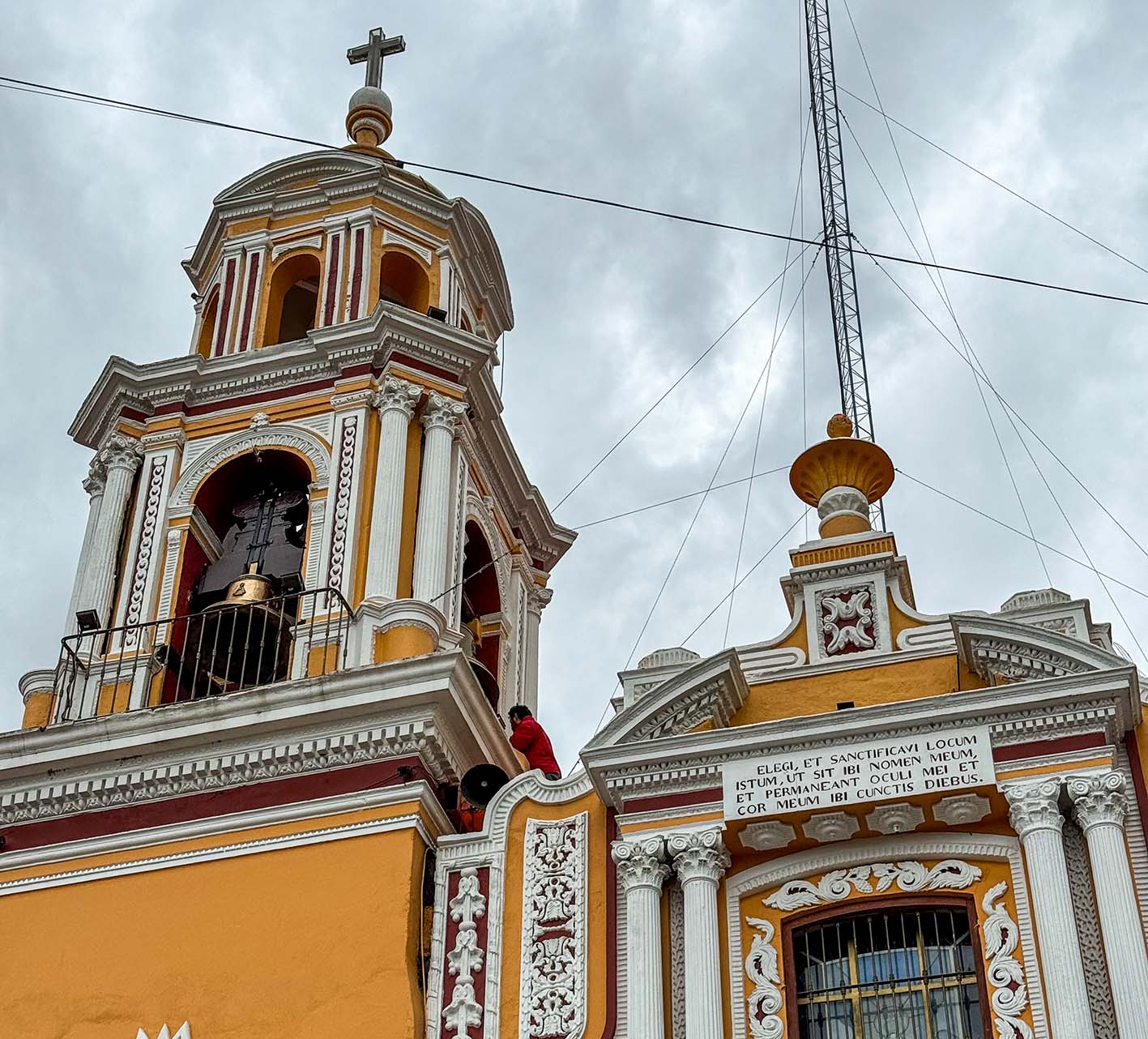
During my trip to Mexico, I initially planned to travel directly from Mexico City to Oaxaca However, a fellow traveller suggested I make a stop in Puebla, and I am glad I did!
Puebla is renowned for its colonial charm, vibrant Talavera tiles, delicious cuisine and (as with much of Mexico) countless churches. One of the most impressive is the Santa Domingo church, which houses the famous Rosary chapel. Built in the 17th century, this chapel is entirely adorned with gold and is a must-see when in Puebla. Just be prepared for a bit of neck strain from gazing up at the gold leaf encrusted dome.
A short ride away is the town of Cholula, home to Tlachihualtepetl, one the largest pyramids (by volume) in the world. Atop the pyramid sits the church of Nuestra Señora de los Ramedios, a testament to the fusion of indigenous and Spanish cultures. On a clear day, you can marvel at the surrounding volcanos, which, according to folk law, were two lovers transformed by the Gods into volcanoes so they can stand together forever.
Puebla’s food is fantastic and famous. Be sure to try the local Mole Poblano, touted as the best in Mexico! For dessert, pick up some local confectionary from Calle de los Dulces (candy street).
- Travel Tip: For something different, try the Cemita sandwich, especially if you are a cheese lover!
7. Lanquin & Semuc Champey – Guatemala
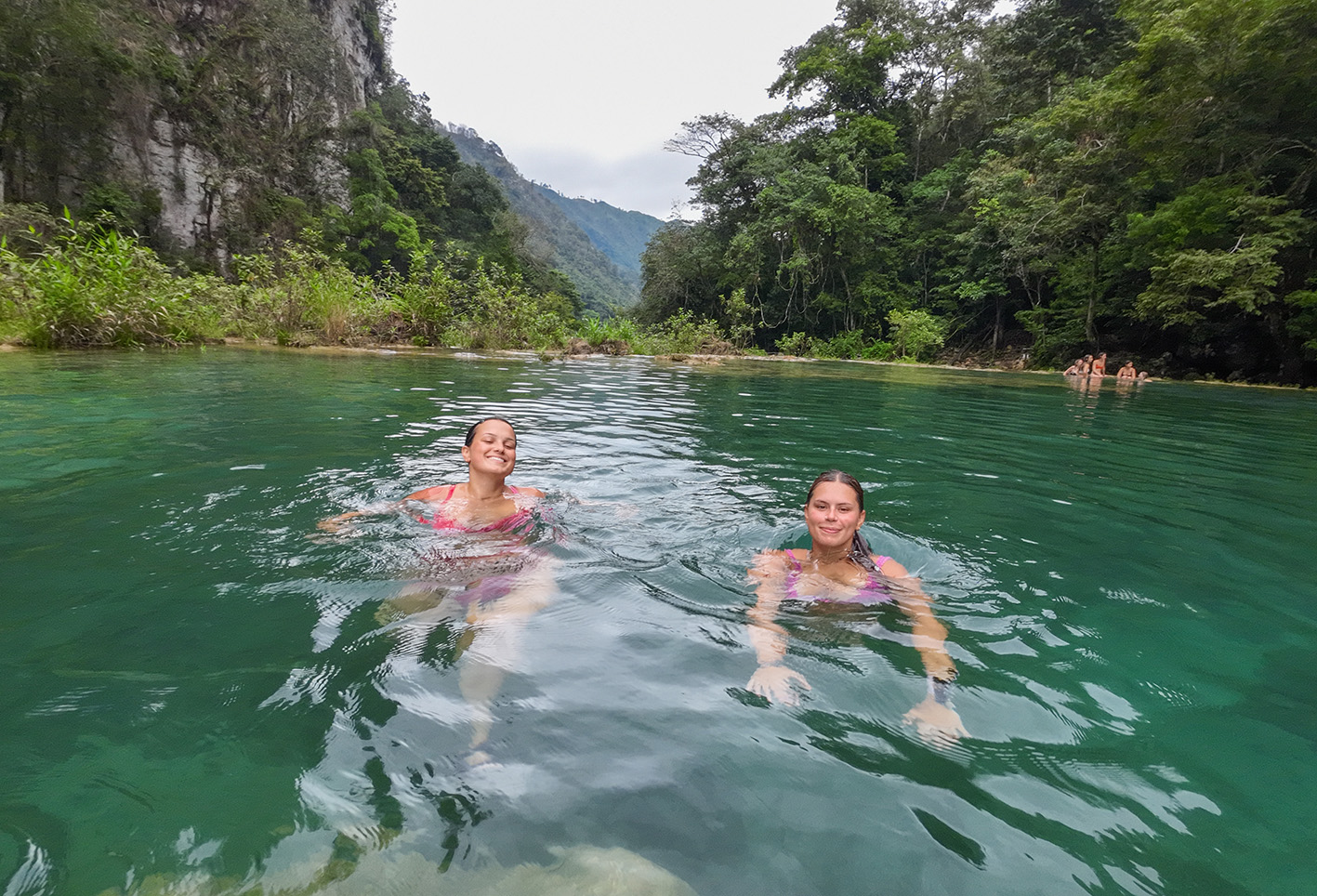
After travelling south from Flores, I arrived in Lanquin. At first glance, this small town didn’t seem to offer much and I wondered what attracted so many off-the-beaten-track travellers. But after a 40-minute truck ride over questionable roads, I understood. Nestled in the mountains, the views of lush hills among the clouds were breathtaking.
The main reason to visit this remote part of Guatemala is to see Semuc Champey, a natural wonder of emerald pools and waterfalls in a limestone canyon. I took the steep hike up to the viewpoint, which offers a perfect view of the pools. Following the hot and exhausting climb, the refreshing pools beckoned me to come down and cool off. Once there, you can jump straight in and decide whether you want to relax by the sound of the waterfall or jump, slide and splash around.
For the more adventurous traveller, a second day can be spent exploring the caves. Upon entering the cave, I was given a lit candle and told to watch my head. Swimming through the candlelit cave, the guide showed us tunnels to slide through and deeper pools to jump into and was on hand to relight our candles when they went out.
- Travel Tip: There are no local bars or restaurants near hotels, so ensure that your accommodation serves good food and has facilities for when you’re not on an excursion
8. The Cayes – Belize
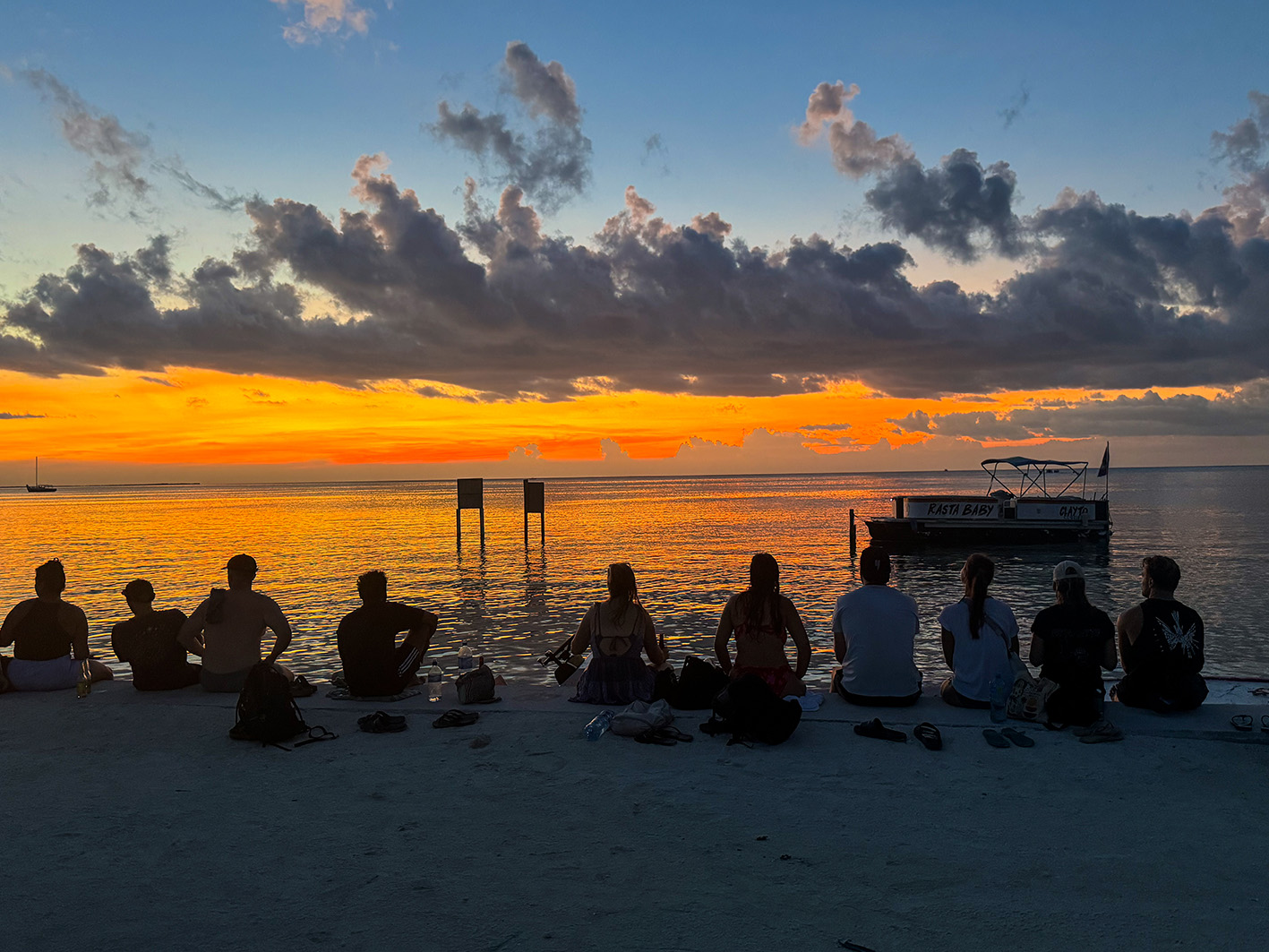
I believe Belize itself is the most underrated place in Central America. It contrasts sharply with neighbouring countries Mexico & Guatemala, not only because English is the primary language, but also because it has a distinct Caribbean vibe. It was time to say a brief goodbye to tacos and guacamole and hello to jerk chicken, rice & beans.
One of the most popular attractions is the Blue Hole, an underwater sinkhole 120m deep. It is the largest of its kind in the world and can be seen from space! Confident divers can explore the coral, but you can also take an aerial tour to see the phenomenon from above.
As I am not a diver, I opted for a snorkelling tour from. Our fantastic guides had fantastic knowledge of the best spots to get into the water and observe wildlife such as manatees, eagle rays, reef sharks, turtles and endless schools of fish. A pod of dolphins guided our boat back to shore. In the evenings, I embraced the laid-back lifestyle of Belize, living by the motto, Go Slow.
- Travel Tip: Cash is king. The local currency is the Belize dollar, but USD is also widely accepted. I struggled to find places that accepted cards without a hefty commission.
9. El Chalten – Argentina
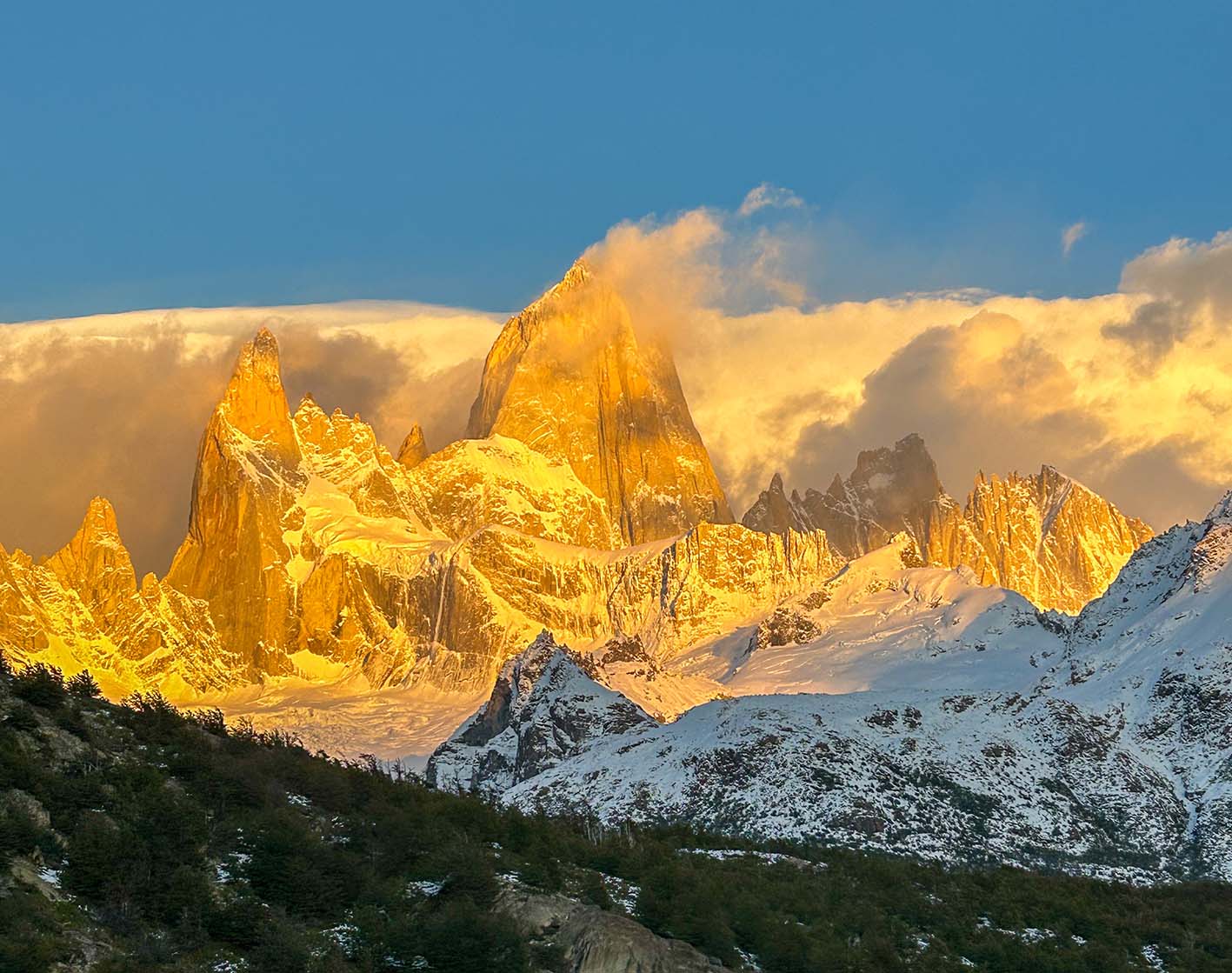
In Southern Argentina, you’ll find El Chaltén, a charming town renowned for being home to one of Patagonia’s most iconic mountains – Fitz Roy. This majestic peak often features on Patagonia postcards and even serves as the logo for Patagonia clothing brand.
To witness the breathtaking viewpoint, you must hike the Laguna de Los Tres trail. For me, this adventure began at 3:30am to catch the sunrise. The hike started with a moderately challenging ascent in the dark, which was surprising given that other travellers had warned me of its difficulty. Then it began. The real challenge is the final 2km, which is incredibly steep and sometimes covered in snow. After a few slips, numerous breath-catching breaks and moments of questioning my love for hiking, I was rewarded with an unforgettable sight – Fitz Roy bathed in the golden light of the sunrise.
The key to hiking in Patagonia is to treat yourself regularly with sweet snacks, hearty meals and celebratory tipples. My personal favourite was the waffles! After a long day of trekking, you’ll find numerous restaurants ready to recharge your energy. Whether you’re in the mood for a classic Argentinian steakhouse or a cozy Japanese ramen bar, there’s something for everyone. Don’t miss out on sampling a beer (or two) from the Patagonia brewery, brewed in Bariloche but beloved throughout the region.
- Travel Tip: Even if you aren’t entirely confident about reaching the summit, give it a try! The views of Fitz Roy along the way are amazing, and the last few kilometres are clearly marked as difficult, so you’ll know when to turn back if needed.
10. Paracas – Peru
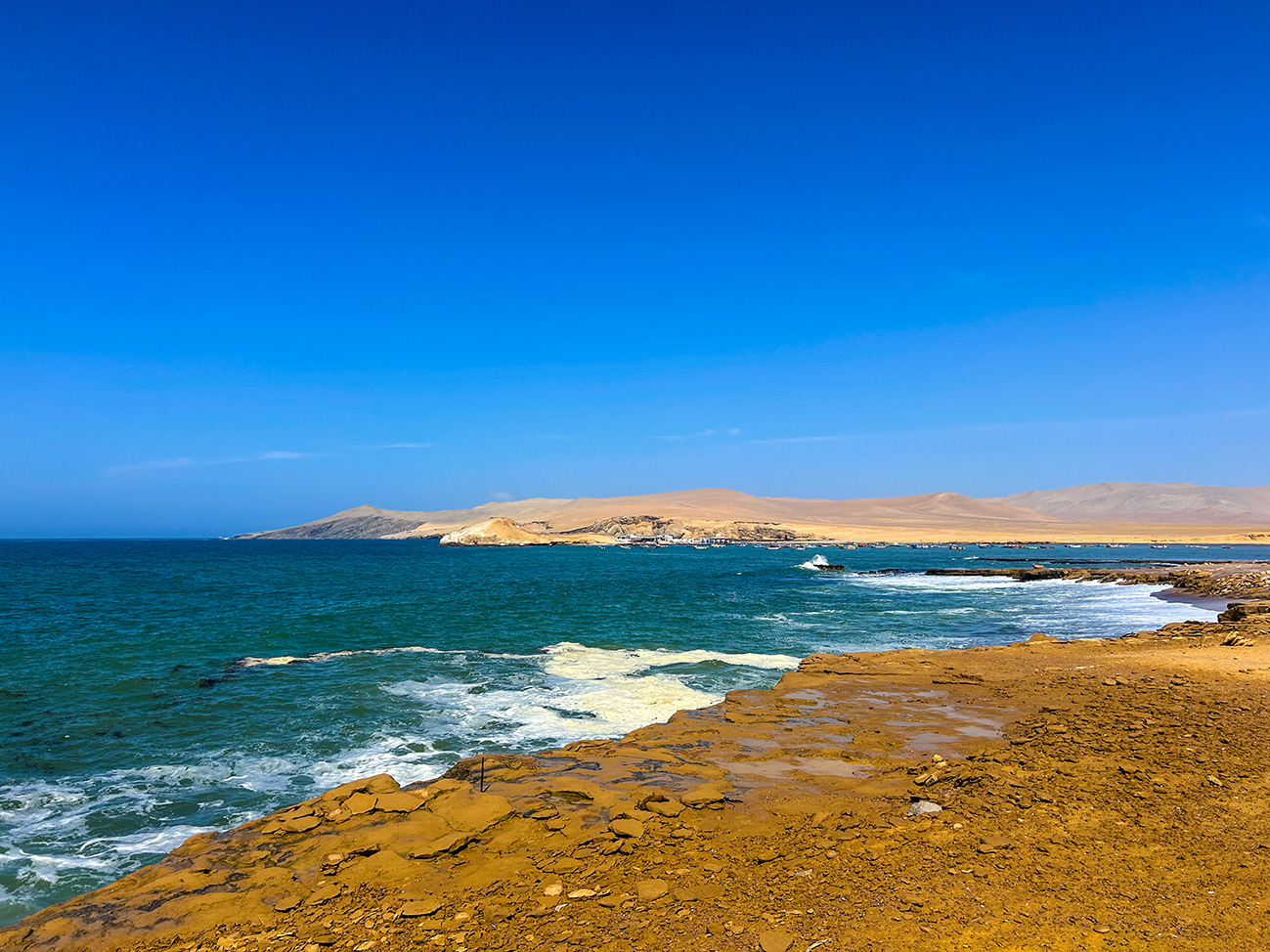
Located close to the famous lines of Nazca, Paracas is situated on Peru’s Pacific coast. Although many travellers choose to visit on a day tour from Lima, I recommend spending a few nights here to fully appreciate what Paracas has to offer.
The most popular excursion in Paracas is to the Ballestas Islands, home to wildlife such as penguins, sea lions and numerous species of seabirds. I realised why this place is nicknamed Peru’s Galápagos – the quantity of animals is fascinating. Our guide pointed out wildlife and quirky rock formations, including one that he claimed looked like Jesus’ side profile. It was a bit of a stretch, but I appreciated the effort. On this tour you can also see the Candelabra of the Andes, lines etched into the hill dating back to 200 BC.
The Paracas National Reserve is another great way to spend a day, boasting beautiful landscapes and inviting beaches. I opted to hire a scooter, but guided tours in sand buggies are very common. Riding through the park, I stopped frequently to photograph rock formations and birdlife. If time permits, I recommend taking a trip to Huacachina, an oasis in the middle of the Ica desert and the only natural oasis in South America.
- Travel Tip: Bad weather can sometimes lead to the cancellation of the Ballestas Island boat trip. It’s a good idea to have at least half a day free in case you need to reschedule.
Tailor-made holidays
Flexible, custom-made holidays to Latin America created to match your exact requirements: our tailor-made itineraries are as unique as the clients for whom they are designed.
Design my tripPapagaio
Your edit for Latin American inspiration
Our exciting range of articles on Latin America explore everything from iconic destinations and lesser-known cultural gems to delicious traditional recipes. You’ll also find exclusive travel tips, first-hand client reviews and the chance to get your personal questions answered by our travel experts.
View Extraordinary Inspiration